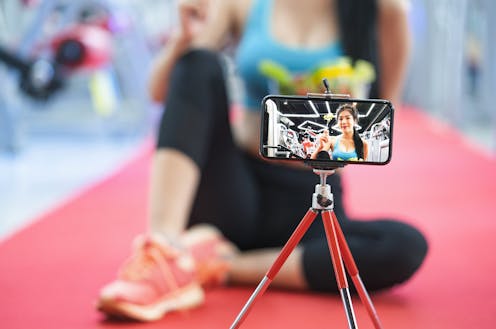We have all heard social media can impact women's body image – but it isn't all bad
- Written by Kim Toffoletti, Associate Professor of Sociology, Deakin University

The “Cost of Beauty”, a short video recently released by global beauty brand Dove, highlights the damaging effects of social media on young womens’ body image and self esteem. It forms part of a wider campaign that raises awareness about the devastating effects of social media on young women’s mental and physical health.
It is clear social media can negatively affect women’s relationships with their bodies, but our recent research revealed a more complex and nuanced picture.
More than a decade of research has shown that unrealistic beauty standards, the rise of “fitspiration”, body shaming and online gender-based violence, are having a significant impact on young women.
That said, social media users are not naive about the toxic beauty ideals being promoted across digital platforms.
Our research found that women were very aware of the risks and vulnerabilities associated with using social media. And women were developing habits and online communities to counter these negative elements.
Read more: Women can build positive body image by controlling what they view on social media
We focused on the emergence of “#fitspo” (short for “fitspiration”) content – think rippling six pack, sweaty sports bra, and smiling face mid-workout.
Despite being seemingly health positive, one of the consequences of fitspiration is that women now experience pressures to be both thin and fit. Increasingly, many women and girls actively avoid these online spaces, while others find support, inspiration and even care in these online communities.
Instagram’s potential as a positive space
In our work with exercising women who use Instagram, we found many everyday examples of how they thoughtfully navigated online spaces to reduce risk and minimise harm to themselves and others.
For instance, when confronted with unrealistic body standards, women were making active choices to strategically curate their social media worlds by blocking, unfollowing – also known as “pruning” – content they found unhealthy or unrelatable. They also increasingly blocked and reported followers who are offering unsolicited advice and negative or sexualised comments.
To challenge the pressures enhanced images can bring, many women chose to represent their “real”, “raw” and imperfect bodies without editing out stretch marks or body fat. Some women promoted this practice by using hashtags such as #filterfreefriday or #noedit.
Women also made choices about how they engaged with other bodies online. Body shaming is rife on social media. But in many exercising communities women avoided posting comments that could make other women feel self-conscious or negative about their bodies.
Making comments about someone’s image could be seen to contribute to body surveillance. So, participants in our research explained that they focused on how women were looking strong or confident, or celebrated their efforts and achievements in a sport. Knowing how it felt to have one’s body judged online prompted women to avoid judging others.
The power of connection
Social connection was also an important feature for women and girls using social media.
We found that for many women, their motivations for sharing images of themselves online were not simply about “showing off” their bodies or promoting themselves. Instead, they were trying to build safe online communities to seek validation and support. Posting pictures of their unfiltered bodies pursuing their sport and fitness goals was one of the ways they built a collective online presence.
Social media was also important for women to promote their offline communities, relationships and skills, not just how they looked. This was particularly important during the pandemic, with fitness professionals using digital technologies to support their movement communities during challenging times.
Read more: Want to be a social media influencer? You might want to think again
Importantly, women from diverse social, cultural and religious backgrounds experienced both the same and different sets of risks (such as racist and sexist trolling or body shaming) when using social media.
Scholars have identified the ways Muslim sportswomen have navigated such risks, carefully considering gender, religion and culture in managing their accounts, their audiences, and taking time to consider the types of images and text they share.
Researchers in Turkey have also revealed the potential in such imagery for challenging racialised and patriarchal norms and expectations of women’s bodies in sport and fitness.
Minimising the harm of social media
Whether we intend it to or not, posting about our bodies online and in public makes us vulnerable.
Our findings suggests that we need alternative ways of thinking about women and girls’ social media usage, where the risks and vulnerabilities of social media use become the basis for a more nuanced way of understanding how participation on social media can affect our lives.
Paying attention to women’s efforts to minimise harm through their own everyday actions on social media is an important first step towards cultivating social media encounters that account for broader impacts of what we post, based on care, consideration and respect.
Authors: Kim Toffoletti, Associate Professor of Sociology, Deakin University





